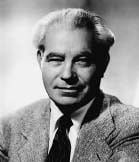
Wrap Shot: The Stranger on the Third Floor
Behind the scenes of the iconic film The Stranger on the Third Floor (1940) — which helped establish a visual style that became known as film noir.
In this scene below from RKO Radio’s The Stranger on the Third Floor, a harried John McGuire encounters a scarf-wearing Peter Lorre among the shadows.
Produced in June of 1940 at a cost of $171,192, the picture was directed by Boris Ingster, written by Frank Partos and photographed by Nicholas Musuraca, ASC. It is the first example of a truly indigenous American film style now called film noir (a designation that wasn’t coined until 1946).
Stranger emerged a year before Citizen Kane and The Maltese Falcon, three years before Cat People, four years before Double Indemnity, and 11 years before Sunset Boulevard. Yet it has all the elements of full-fledged noir, including moral ambiguity, hovering fear, menacing shadows and angular POVs, dark streets, precarious stairs, unexpected noises the works.
It’s ironic that French “cineastes” christened a film style that is so resolutely American. Inasmuch as the French also gave us the “auteur theory,” it’s hardly surprising that they gave directors all of the credit for the style. Some American writers noted the influence of authors such as Raymond Chandler, Cornell Woolrich and Dashiell Hammett. Since visual style is the most tangible aspect of the form, cinematographers should have gotten more recognition.

Recently, cinematographer John Alton belatedly received richly deserved praise for his contributions to the film noir look. When a single individual earns such recognition, however, there often follows an impression that one man alone is responsible for the style. Alton assuredly was one of several creative directors of photography who contributed importantly to noir art in the mid-1940s, but he was not alone. Some of the others were John Seitz, ASC (This Gun For Hire, Double Indemnity, The Lost Weekend and Sunset Boulevard); Gregg Toland, ASC (Citizen Kane); Arthur Edeson, ASC (The Maltese Falcon); Joseph LaShelle, ASC (Laura and Fallen Angel); Woody Bredell, ASC (Phantom Lady and Christmas Holiday); Milton Krasner, ASC (Woman in the Window and Scarlet Street); Norbert Brodine, ASC (Kiss of Death) and Russell Metty, ASC (Touch of Evil).

Musuraca was probably the most influential of all, though. The look of The Stranger on the Third Floor is a virtual preview of Val Lewton's 1943-’46 productions at RKO, the first and four others of which were photographed by Musuraca.
His noir vision dominates Cat People, Curse of the Cat People, The Fallen Sparrow, Ghost Ship, The Seventh Victim, Bedlam, Deadline at Dawn, The Spiral Staircase, Out of the Past and The Locket.






